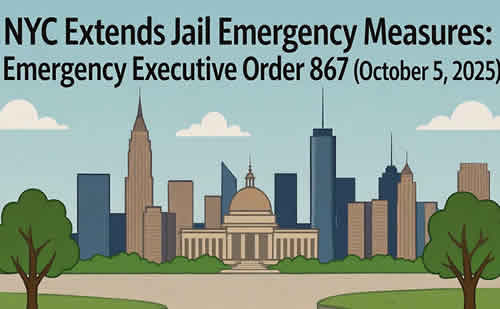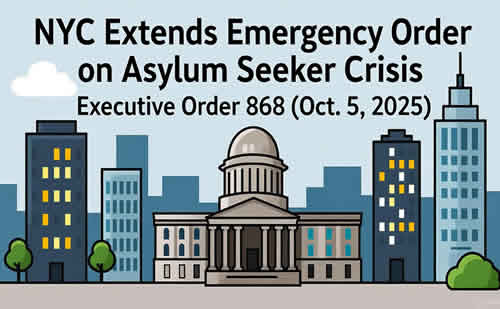President Biden and Vice President Harris Announce Additional Actions to Reduce Gun Violence and Save Lives
New Executive Order Directs Federal Agencies to Combat Emerging Firearms Threats and Improve School-Based Active Shooter Drills
Today, President Biden and Vice President Harris are announcing a new Executive Order directing federal agencies to improve school-based active shooter drills and combat the emerging threats of machinegun conversion devices and unserialized, 3D-printed firearms, as well as additional executive actions that advance the Biden-Harris Administration’s agenda to reduce gun violence and save lives.
After the prior Administration oversaw the largest one-year increase in murders ever recorded, President Biden and Vice President Harris took action from the start of their Administration to reduce violent crime. The President and the Vice President helped deliver over $15 billion in funding through the American Rescue Plan for law enforcement, community violence interventions, and other public safety strategies. By the middle of 2022, the Biden-Harris Administration had already announced more executive actions to reduce gun violence than any other administration. Then, on June 25, 2022, President Biden signed into law the Bipartisan Safer Communities Act, the most significant gun violence prevention law in nearly 30 years. On September 22, 2023, to help drive further progress, President Biden established the first-ever White House Office of Gun Violence Prevention, overseen by Vice President Harris.
Under the leadership of President Biden and Vice President Harris, in 2023 the United States experienced the single largest homicide rate drop in recent history. The reduction in homicide has accelerated this year. Data submitted to the Department of Justice shows that the homicide rate dropped another 17 percent from January through June 2024, compared to the same time period in 2023. Data from the Gun Violence Archive indicates that the number of mass shootings so far this year is 20 percent lower than it was at this time last year.
Today, as we mark one year since the establishment of the Office, President Biden and Vice President Harris are announcing additional meaningful actions to reduce gun violence and save lives. This announcement builds on the numerous additional life-saving actions the Biden-Harris Administration has taken, as detailed in the Office’s Year One Progress Report.
President Biden is signing an Executive Order to accelerate progress on two key priorities: combating emerging firearms threats and improving school-based active shooter drills.
Combatting Emerging Firearms Threats: In April 2021, one of the Biden-Harris Administration’s first executive actions to reduce gun violence was to address the emerging threat of firearms without serial numbers, often referred to as “ghost guns.” To expand these efforts, ATF established an Emerging Threats Center. This Center focuses ATF’s resources on identifying developments in illicit firearm marketplaces, including the use of new technologies to make and unlawfully distribute undetectable firearms and devices that convert semi-automatic firearms into illegal machineguns.
Now, President Biden and Vice President Harris are taking additional action on two emerging firearms threats: machinegun conversion devices and unserialized, 3D-printed firearms.
- Machinegun conversion devices enable semi-automatic firearms, including easily concealable handguns, to match or exceed the rate of fire of many military machineguns with a single engagement of the trigger—up to 20 bullets in one second. From 2017 through 2021, ATF recovered 5,454 of these devices, a 570 percent increase over the previous five-year period. Machinegun conversion devices are illegal to possess under federal law, but we continue to see these devices show up at crime scenes because they are small, cheap, and easy to install. Machinegun conversion devices are often illegally imported or illegally made on a 3D printer from computer code found online. The 3D-printing of a machinegun conversion device costs as little as 40 cents and takes fewer than 30 minutes.
- Unserialized, 3D-printed firearms can be used for illegal purposes such as gun trafficking, unlawful possession by people convicted of felonies or subject to domestic violence restraining orders, or unlawfully engaging in the business of manufacturing or selling firearms. These firearms can be 3D-printed from computer code downloaded from the Internet and produced without serial numbers that law enforcement use to trace firearms recovered in criminal investigations. Some 3D-printed firearms can be made to be undetectable by magnetometers used to secure airports, courthouses, and event spaces, even though these undetectable firearms are illegal to make, sell, or possess under federal law. As 3D-printing technology continues to develop rapidly, the safety threat posed by 3D-printed firearms may suddenly increase.
In this Executive Order, President Biden is establishing an Emerging Firearms Threats Task Force, consisting of leadership from key federal departments and agencies. President Biden is directing the Task Force to issue a report within 90 days that includes: an assessment of the threat posed by machinegun conversion devices and unserialized, 3D-printed firearms; an assessment of federal agencies’ operational and legal capacities to detect, intercept, and seize machinegun conversion devices and unserialized, 3D-printed firearms; and an interagency plan for combatting these emerging threats. The report will include any additional authorities or funding the federal agencies need from Congress in order to complete this work.
Improving School-Based Active Shooter Drills: The Biden-Harris Administration is committed to preventing gun violence in schools, including by keeping guns out of the hands of potential school shooters and investing more resources in school safety and violence prevention. The majority of schools are currently using drills to prepare for an active shooter situation. Despite the ubiquity of these drills, there is very limited research on how to design and deploy these drills to maximize their effectiveness and limit any collateral harms they might cause. Many parents, students, and educators have expressed concerns about the trauma caused by some approaches to these drills. Federal agencies need to help schools improve drills so they can more effectively prepare for an active shooter situation while also preventing or minimizing any trauma.
In the Executive Order, President Biden is directing the Secretary of Education and the Secretary of Homeland Security, in coordination with the Attorney General, the Secretary of Health and Human Services, and the U.S. Surgeon General, to develop and publish, within 110 days, information for K-12 schools and institutions of higher education regarding school-based active shooter drills. The information will include a summary of: existing research on active shooter drills and resources for school districts and institutions of higher education on how to create, implement, and evaluate evidence-informed active shooter drills; how to conduct effective and age- and developmentally-appropriate drills; how best to communicate with students, families, and educators about these drills; how to prevent students and educators from experiencing trauma or psychological distress associated with these drills; and how best to serve people with disabilities and those with language-related needs, including by ensuring compliance with federal civil rights laws, when designing and implementing school-based active shooter drills.
In addition to the Executive Order, federal departments and agencies are taking the following actions:
Promoting Safe Gun Storage and Red Flag Laws
- Encouraging Safe Storage of Firearms: Today, the Department of Education is providing schools, school boards, and policymakers with a new tool to promote safe gun storage in their communities. Following up on its initial safe storage actions, the Department of Education is publishing an interactive website that highlights examples of state, community, and school district actions across the nation that promote safe gun storage within school communities. The website includes a map with state safe storage laws, examples of how schools are communicating with parents about safe storage, and examples of local policies on safe storage education. This new resource builds on guidance the Department published earlier this year to highlight physical safety measures schools can pursue to help keep students safe in the event of gun violence in schools.
- Clarifying Medicaid Reimbursement for Counseling on Firearm Safety: Health systems, hospitals, and healthcare workers are an essential component of a healthy gun violence prevention and intervention system. By the end of October, the Centers for Medicare and Medicaid Services (CMS) will announce that states may choose to use Medicaid to pay a health care provider for counseling parents and caregivers on firearm safety and injury prevention. This announcement will build off the coverage that Medicaid provides for “anticipatory guidance,” which is health education and counseling to help parents and caregivers understand and improve the health and development of their children. For example, Bright Futures/American Academy of Pediatrics’ guidelines include firearm safety guidance, such as safe storage guidance, as recommended anticipatory guidance for pediatricians to provide to parents.
- Implementing State Red Flag Laws: The Department of Justice is announcing over $135 million in formula awards to 48 states under the Byrne State Crisis Intervention Program (Byrne SCIP), which provides funding for the implementation of extreme risk protection order, or “red flag”, programs, state crisis intervention court proceedings, and related programs/initiatives. The implementation of state red flag laws is supported by the National Extreme Risk Protection Resource Center.
Funding Community Violence Intervention
- Funding Community Violence Interventions: In furtherance of the Biden-Harris Administration’s strategy to invest in community violence interventions as a proven solution to prevent gun violence, the Department of Justice is announcing an additional $85 million in funding through the Community Violence Intervention and Prevention Initiative (CVIPI). This funding will help 30 agencies and organizations develop and expand their community violence intervention work, including hospital-based violence intervention, street outreach, and cognitive behavioral therapy. These strategies are essential complements to law enforcement and this investment is part of the $400 million in total funding that the Biden-Harris Administration has secured for CVIPI. CVIPI is only one part of how the Administration funds community violence interventions. This fact sheet lists the full range of federal resources available to address community violence.
- Clarifying Medicaid Reimbursement for Violence Intervention: CMS previously clarified that states may authorize health care providers to be reimbursed by Medicaid for violence intervention programs. In October, CMS expects to proactively raise this clarification with states. CMS will also explore how best to convene state governments and healthcare providers on incorporating Medicaid benefits into violence prevention programs.
Improving the Gun Background Check System
- Facilitating Enhanced Background Checks for Individuals Under Age 21: The Bipartisan Safer Communities Act (BSCA) established enhanced background checks for individuals under age 21 trying to purchase a firearm. These enhanced checks have already stopped over 900 transactions, keeping guns out of the hands of dangerous individuals. But a number of states across the country have privacy laws that prevent state officials from fully responding to enhanced background check inquiries. The Biden-Harris Administration’s Safer States Agenda made fixing this issue a top priority for states, and Connecticut, Vermont, Nevada, Texas, and Kentucky have all recently made necessary changes. Today, the Department of Justice is issuing model legislation that additional states may use to inform their own legislation and allow a carve-out to share juvenile records solely for the purpose of enhanced background checks. In addition, the Justice Department is releasing information on whether state laws permit information-sharing with regard to juvenile records for the purposes of enhanced background checks.
- Maximizing the Enhanced Background Check with Red Flag Laws: Part of the enhanced background check requires requesting records from state and local law enforcement and mental health repositories about potential purchasers under 21. In these and other circumstances, if a person shows clear signs of being in crisis and a danger to themselves or others, they may qualify for consideration under applicable red flag laws which would generally result in that person being ineligible to possess or receive firearms. By October 22, the Extreme Risk Protection Order (ERPO) National Resource Center will provide training to state and local law enforcement on the ERPO process, including how it intersects with individuals under 21.
- Improving the Federal Gun Background Check System: BSCA’s enhanced background checks for gun purchasers under age 21 and the law’s narrowing of the “boyfriend loophole,” along with the expanding number of states with red flag laws, are placing new challenges on state and local agencies attempting to ascertain what records they need to send to the federal gun background check system. To address these challenges, there needs to be system-wide improvements and a new era of collaboration among various entities engaging with the federal gun background check system. By December 15, the Department of Justice’s Office of Justice Programs will have evaluated the existing grant programs that support improvements to the gun background check system and make any changes needed to support states looking to improve their records systems, which may include lengthening the duration of grants where appropriate.
Expanding Data on Gun Violence and Gun Trafficking
- Publishing Additional Data on Ghost Gun Trends and Firearms Trafficking: This winter, ATF will publish the fourth volume of its National Firearms Commerce and Trafficking Assessment. This volume will provide an update on ghost gun trends and trafficking investigations, as well as expanded information on machinegun conversion device recoveries.
- Expanding Collection of Gun Violence Data: There is a lack of reliable and timely data on gun deaths and gunshot injuries that show what is happening nationwide and in individual communities. This data is critical to focusing investment and enforcement efforts. Today, the FBI is announcing that it will collect additional detail in its data collection for gunshot injury wounds in the National Incident-Based Reporting System (NIBRS) by June 2025. The FBI will implement a new injury code to reflect a gunshot wound in the NIBRS victim segment. NIBRS will also enable law enforcement agencies to submit additional detail as to how firearms were used in specific crimes, and the nature of the crime at issue.
- Improving Data on Gunshot Injuries: The Centers for Disease Control and Prevention (CDC) is improving a data visualization tool to present gun death and injury data faster and at a more local level. Using data from vital statistics and emergency rooms at the local level can help inform prevention strategies and evaluate the effectiveness of programs.
Supporting Survivors of Gun Violence
- Addressing the Trauma Resulting from Gun Violence: This fall, the federal Substance Abuse and Mental Health Services Administration (SAMHSA) will take additional action to support individuals dealing with the trauma that results from gun violence. SAMHSA will release:
- Best practices for local offices of violence prevention to use in addressing trauma resulting from gun violence;A tip sheet for individuals affected by gun violence who may be seeking more information on the behavioral health impacts of gun violence and how to seek help;A report on lessons learned from the federal ReCAST grant program to uplift the voices of communities impacted by violence as well as share strategies other communities can implement to promote healing, recovery, and resiliency; and
- A toolkit for faith-based leaders, educators, and other leaders to help communities affected by the trauma resulting from gun violence.
Destroying Crime Guns
- Ensuring Appropriate Disposition of Firearms Seized by Law Enforcement: Firearms or firearm parts that were presumed to be destroyed by law enforcement have begun showing up in crimes. Sometimes the guns recovered by law enforcement are sent to a third-party that only partially destroys them. By October 30, the Department of Justice will refresh and clarify best practices for federal law enforcement disposition of seized firearms, including when working in partnership with state and local law enforcement. The Department of Justice will also release a plan to offer new training and education for state and local partners on safe and appropriate firearm disposition.
Preventing Firearm Suicide
- Facilitating Voluntary Out-of-Home Storage to Prevent Firearm Suicide: Voluntary out-of-home storage of firearms is an effective tactic to saves lives by creating time and space between a person in crisis and a firearm. A number of states, including Colorado, Louisiana, Maryland, North Carolina, and Wisconsin, have developed gun storage maps to show different locations where a gun owner can voluntarily store their firearms. A federally funded program has developed model guidelines, contracts, and standard operating procedures for businesses interested in providing this option. Today, the Department of Veterans Affairs and SAMHSA are using their network of teams committed to preventing Veteran suicide—known as the Governor’s Challenge to Prevent Suicide Among Service Members, Veterans, and Families—to encourage states to convene federally licensed gun dealers around offering out-of-home storage to our Nation’s heroes and their families.
Congress must act. While the Biden-Harris Administration’s gun violence prevention actions are saving lives, there is much more to do. President Biden and Vice President Harris continue to call on Congress to enact commonsense gun safety legislation—from a ban on assault weapons and bump stocks to universal background checks to a repeal of gun manufacturers’ immunity from liability—and to enact federal safe storage and red flag laws and fully fund community violence intervention programs and the Bureau of Alcohol, Tobacco, Firearms and Explosives (ATF).
September 26, 2024 White House, Washington, DC
Republican Critic Questions:
- “Are Biden’s new gun control measures violating the Second Amendment, restricting the rights of responsible gun owners?”
- Republican critics may question if this executive order infringes on citizens’ constitutional rights to bear arms.
- “How will this executive order address increasing crime rates and mental health issues without penalizing law-abiding gun owners?”
- They might argue that the administration is focusing too much on guns rather than underlying issues like crime and mental health.
- “Could these new federal regulations lead to unintended consequences for communities where firearms are essential for protection and daily activities?”
- Republicans may worry about how these actions affect rural and suburban areas where guns are a key part of life.
Democrat Critic Questions:
- “Do these executive actions go far enough, or is the administration avoiding the tough decisions necessary for real gun reform?”
- Democrats may question if these measures are strong enough to bring about significant reductions in gun violence.
- “Why isn’t the Biden administration working harder to pass comprehensive gun legislation in Congress rather than relying on executive orders that could be reversed?”
- Some may criticize the administration for not pushing Congress to enact long-term solutions.
- “How will these new measures ensure that marginalized communities, especially those disproportionately affected by gun violence, see tangible improvements in safety?”
- Democrats may focus on whether the new actions will effectively help communities most impacted by gun violence.
‘Sources: White House WH.gov. Midtown Tribune News,
Big New York news BigNY.com










